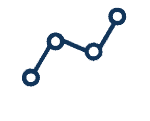Succession Planning Training
Learn the Basics of Succession with SIGMA’s Succession Planning Training
Succession planning is often delayed because organizations don’t know where to begin. To help make succession planning more approachable, SIGMA has developed a free, online, self-guided training. Through these five modules, participants will learn to leverage SIGMA’s six-step succession planning process and receive the tools and templates required to begin drafting a customized succession plan.
This course takes approximately 1 hour and 10 minutes to complete.
If you have questions about the training material or would like to discuss what succession planning looks like at your organization, please don’t hesitate to contact us. Our consultants would be happy to speak with you.
Need support developing your succession plan? Learn how SIGMA’s Succession Planning Sprint delivers a customized 12-month succession plan for each of your leaders in only 30 days.
Succession Planning Training Modules

Approximate Time to Complete: 15 minutes
Welcome to SIGMA’s Succession Planning Training. Module 1 introduces the succession planning process and its importance to organizational strategy. This introductory module provides the foundational knowledge that serves as the basis for learning how to develop and implement a strong succession planning process in modules 2-5.
Additional Resources:

Approximate Time to Complete: 15 minutes
It is crucial for organizations to have a succession planning process, because the process provides a necessary framework to promote efficient, consistent, and effective implementation. In Module 2, you will learn SIGMA’s six-stage succession planning process. This process is a structured approach to succession planning that is easy to replicate and allows leaders to scale their own succession plan across the entire organization.
Additional Resources:

Approximate Time to Complete: 10 minutes
Once familiarized with SIGMA’s six-step succession planning process, it’s time to draft your own succession plan. In Module 3, we provide you with form-fillable templates and other resources to help you create a succession plan that fits the unique context of your own organization and follows the six steps of the process.
The essential first step in SIGMA’s succession planning process is to identify critical roles. To identify critical roles, use our Critical Roles Identification Questionnaire. This tool will help you organize key positions and prioritize succession planning based on how important each role is to your organization, and how urgent the need for succession planning is. Begin with your own team, then scale this exercise to multiple teams and levels of the organization.

After you’ve identified your organization’s critical roles, the next stage is to draft success profiles. Success profiles are templates for the skills and abilities needed to succeed in a particular position. Use SIGMA’s Success Profile™ Template to outline success profiles for each critical role in your organization, and explore SIGMA’s LeaderBase if you are interested in accessing ready-made Success Profiles™ for common leadership roles.

Once a success profile has been built for each critical role, you are ready to nominate successors. Begin this process by using the Succession Candidate Nomination Survey to help your succession planning team evaluate the potential of each candidate.

Results from the nomination survey are used to populate a draft Succession Bench that groups successors based on their readiness and provides an “at-a-glance” measure of bench strength for the incumbent’s role. A well-maintained Succession Bench is also a great way to measure the success of your overall succession plan.

Before you can begin the development process, you will need to assess each succession candidate’s development needs. To do this, fill out the Candidate Profile Template. Use a validated assessment like the LSP-R to evaluate the succession candidates on qualities required for the target role. List notable gaps between current candidate skills and those required for the target position in each category, then use this worksheet to identify priorities for candidate growth and talent development opportunities.

After assessing development needs, you can begin the talent development process. To help structure this process, we’ve created a Development Actions Form that identifies gaps in talent and allows you to monitor the development progress of succession candidates. Each of your potential successors should have their own Development Actions Form that is reviewed annually to help build their readiness for future roles.

Use the Talent Progress Scorecard to review the outcomes of your succession program across a variety of indicators, including money saved, delays prevented, and improvements to existing HR processes. These indicators will help you communicate success to senior leadership, succession candidates, and the organization as a whole.


Approximate Time to Complete: 15 minutes
With a draft succession plan now completed, you’re ready to learn how to implement the plan in your own organization.
When it comes to succession planning, a successful implementation is dependent on clear communication. A significant strategic process like succession planning must be communicated to the right people in the right sequence. Module 4 guides you through the necessary steps needed to effectively communicate the succession plan and secure buy-in from senior leadership. To do this, you need to:
- Create a Succession Advisory Team (SAT).
- Share the plan with leaders across the organization.
- Inform candidates of their role in the process.
The following article will guide you through each of these steps and provide you with helpful resources to effectively communicate and implement your succession plan.
Note: When it comes to implementation, SIGMA has observed that developing talent can be the most difficult and time-consuming step of the succession planning process. To help you set reasonable goals, our consultants offer valuable insights in Succession Planning and Progress Expectations.
Additional Resources:

Approximate Time to Complete: 5 minutes
Once the succession plan has been implemented, the final step is to manage the transition between incumbent and successor. To prepare for a smooth transition, read SIGMA’s blog on Managing Succession Transitions. In this blog, you will learn about knowledge transfer and receive a guide that can be used to help your organization build an effective knowledge transfer process.
When the time for transition arises, download SIGMA’s 30 60 90 Day Plan and work with your succession candidate to fill out the template. Ask them to cast a five-year vision, outline their learning goals, and create an action plan with clear metrics for success. This template was designed to prepare new incumbents effectively and ensure a positive trajectory for their time in the critical role.
Succession Planning Training Quiz
Congratulations! You have completed all five modules of SIGMA’s Succession Planning Training. To ensure you have understood and retained the material, our team has created an optional 5-minute quiz.
Once you complete the quiz, you will have the opportunity to book a free 30- or 60-minute call with one of SIGMA’s consultants to discuss your results and receive guidance and tools tailored to the unique needs of your organization.
Next Steps
If you would like more resources to guide your succession planning process, explore SIGMA’s Succession Planning Template Library. For answers to frequently asked questions, watch our Succession Planning Webinar: Q&A with the Consultants. If you would like to speak with a consultant about anything you learned in this training, or about what succession planning looks like at your organization, please complete the form below and our team will contact you shortly.